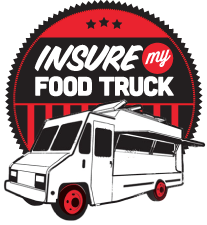Introduction
In the vibrant world of culinary entrepreneurship, food trucks have become iconic symbols of innovation, offering delicious and diverse cuisines on wheels. To thrive in this competitive landscape, food truck owners must go beyond traditional approaches and embrace creative strategies to not only gain market share but also secure coveted spots at events for new revenue streams. In this blog post, we'll explore inventive ways that food trucks can distinguish themselves and elevate their presence in the market.
Craft a Unique Brand Identity
One of the first steps to gaining market share is to establish a strong and memorable brand identity. From an eye-catching logo to a distinct color scheme, a cohesive brand presence helps food trucks stand out in crowded spaces. Consider a catchy tagline or theme that resonates with your target audience, creating a lasting impression that goes beyond the plate.
Leverage Social Media Marketing
Social media platforms are powerful tools for food trucks to connect with their audience and generate buzz. Regularly update social media profiles with high-quality images of your dishes, behind-the-scenes content, and information about upcoming events. Engage with followers, run promotions, and collaborate with influencers to expand your reach and build a community around your brand.
Create Signature Dishes and Limited-Time Specials
Offering signature dishes that are unique to your food truck not only sets you apart but also creates a sense of exclusivity. Consider introducing limited-time specials or themed menus for specific events. This not only adds an element of excitement for regular customers but also entices new ones to try something special that may not be available later.
Collaborate with Other Local Businesses
Collaboration can be a powerful strategy for food trucks to expand their reach. Partner with local businesses, such as breweries, coffee shops, or boutique stores, for joint events or promotions. Cross-promotion introduces your truck to a new audience while strengthening ties within the community.
Offer Catering Services for Private Events
Diversify revenue streams by offering catering services for private events like weddings, corporate gatherings, and parties. Develop customizable catering packages to accommodate various preferences and budgets. A positive catering experience can lead to repeat business and referrals, helping to build a steady stream of income.
Participate in Food Truck Festivals and Events
Securing a spot at food truck festivals, local markets, and community events is an excellent way to gain exposure and attract new customers. Research and actively seek out these opportunities to showcase your offerings to a diverse audience. Networking with event organizers and fellow food truck owners can open doors to exclusive events and collaborations.
Implement a Customer Loyalty Program
Encourage repeat business by implementing a customer loyalty program. Offer discounts, free items, or exclusive perks for frequent customers. Loyalty programs not only incentivize repeat visits but also foster a sense of appreciation and connection between the food truck and its patrons.
Conclusion
In the dynamic world of food trucks, creativity is the key to success. By crafting a unique brand, leveraging social media, creating signature dishes, collaborating with local businesses, offering catering services, participating in events, and implementing a customer loyalty program, food trucks can not only gain market share but also unlock new revenue streams. Embrace these creative strategies to roll your food truck to greater heights of success in the ever-evolving culinary landscape.








